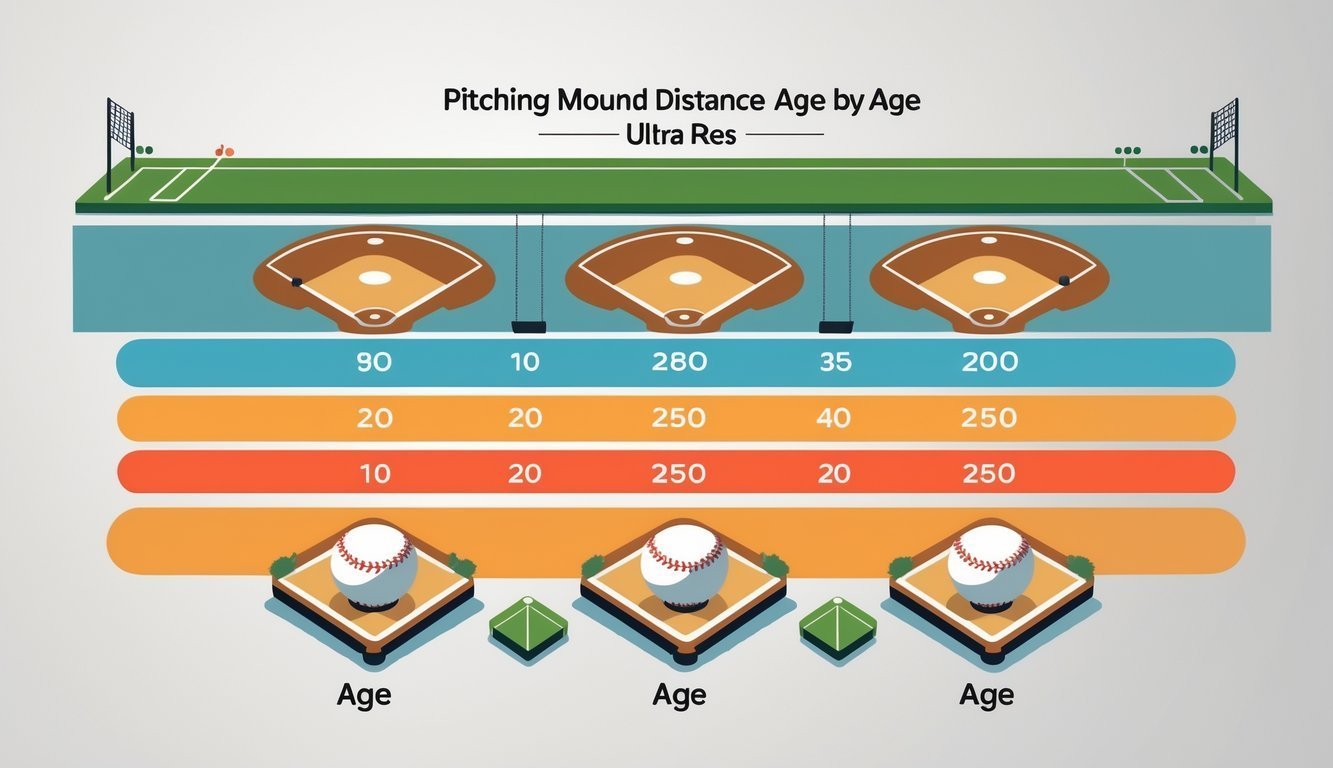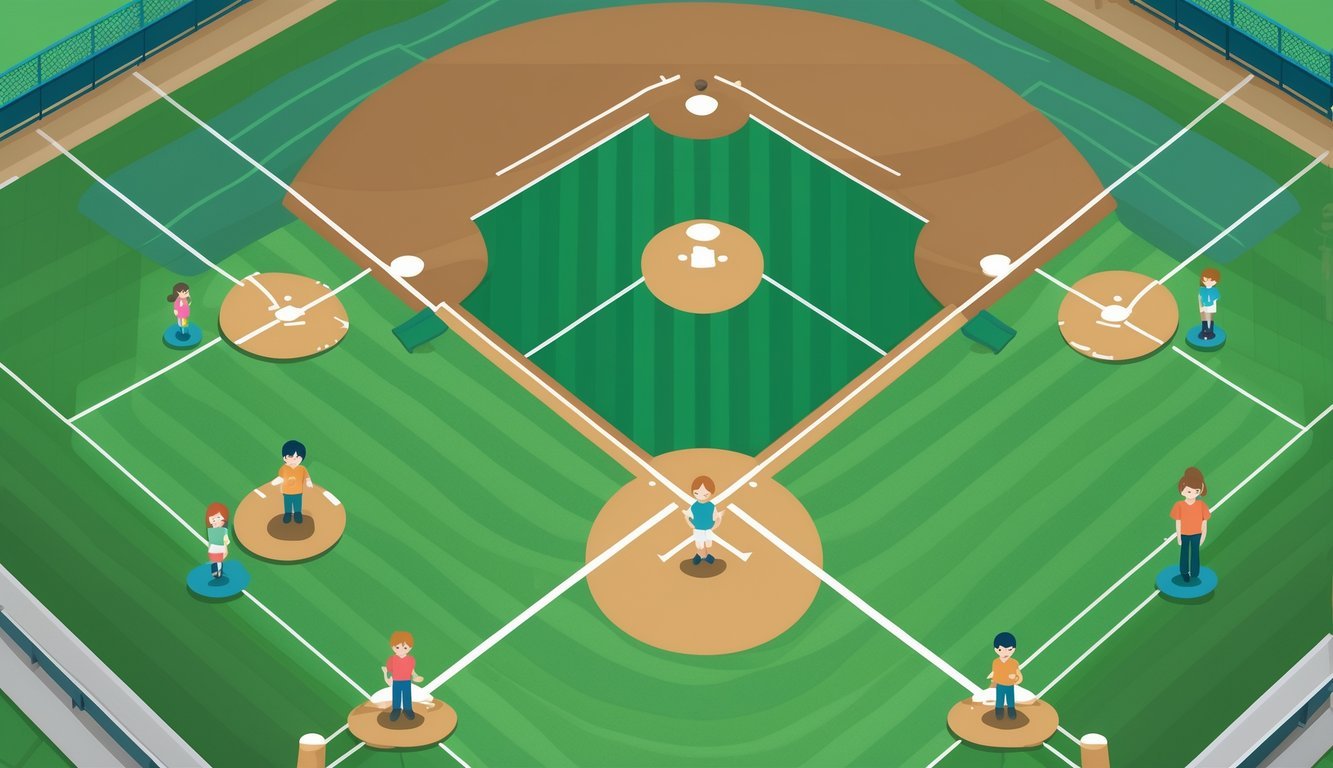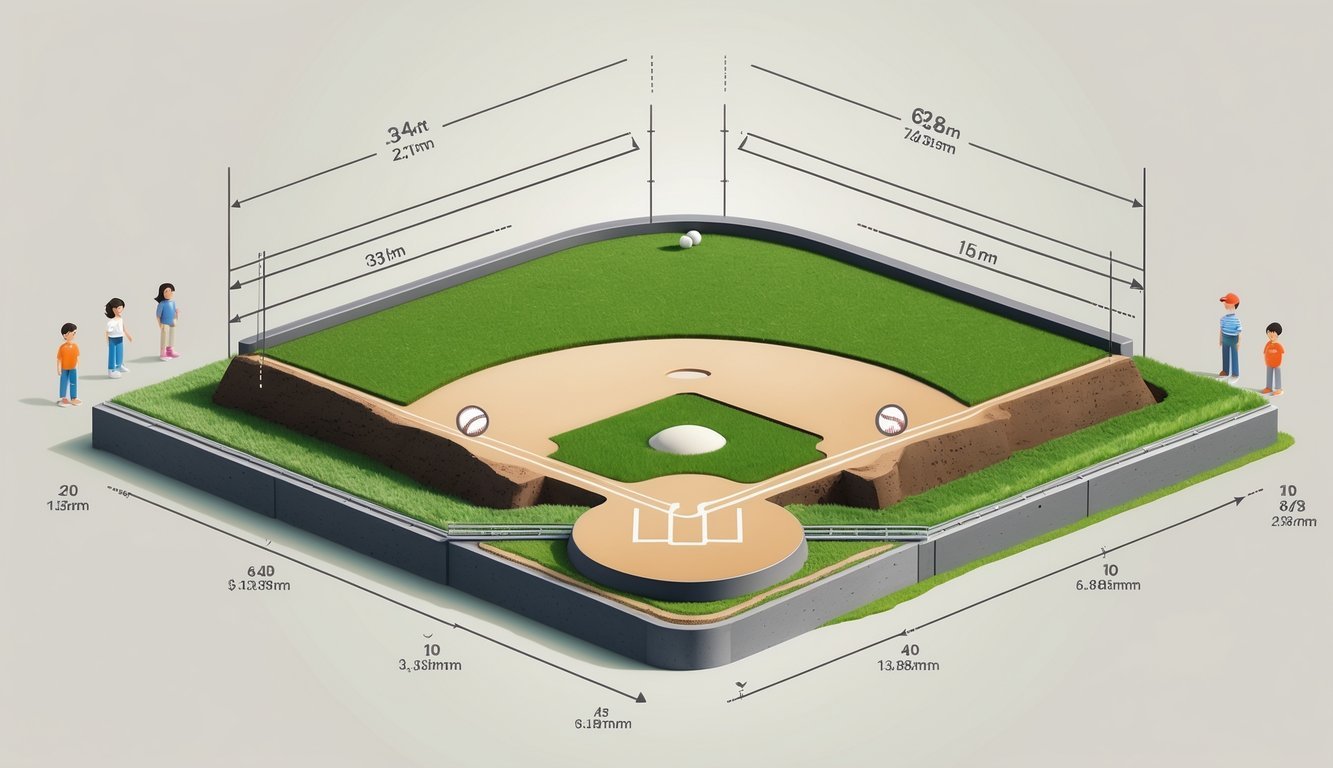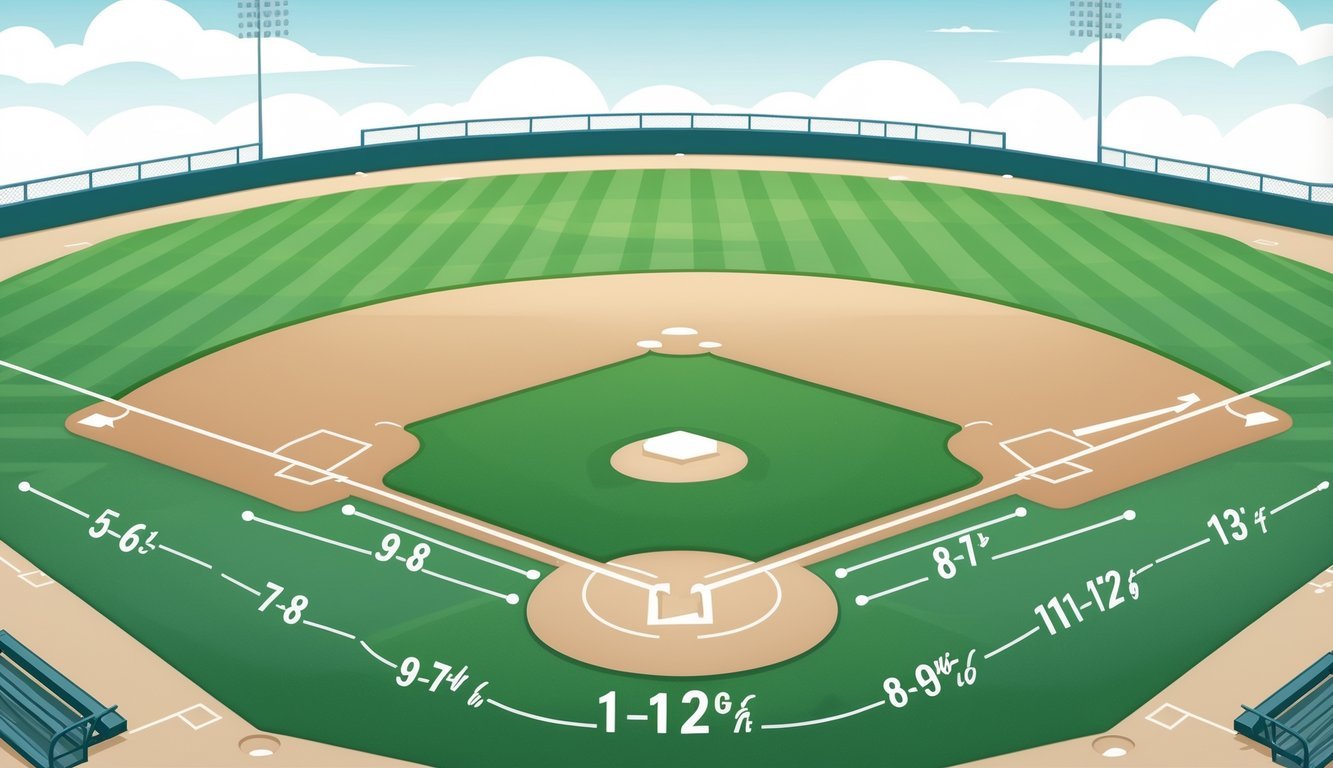PsychNewsDaily Publishers
100 Summit Drive
Burlington, MA, 01803
Telephone: (320) 349-2484
PsychNewsDaily Publishers
100 Summit Drive
Burlington, MA, 01803
Telephone: (320) 349-2484
Pitching distances in youth baseball increase from 30 feet for 6-year-olds to 60 feet, 6 inches for high school players, ensuring safety and skill development.

Pitching mound distance doesn’t stay the same as kids get older—it changes to match their growth and skill level. For kids around 6, you’re looking at about 30 feet. By the time they hit their teens, it’s closer to 50 feet. This gradual increase lets pitchers work on technique without risking their arms.
Different leagues and age groups set specific distances to keep things safe and enjoyable. These changes help players build both strength and accuracy as they grow. Honestly, knowing the right pitching distance can really change how you play—and how much you enjoy the game.
If you understand these distances, you’re following the rules and building your pitching skills bit by bit. It’s a pretty important piece of baseball or softball, no matter your level.

Pitching mound distance doesn’t stay static as you move up in baseball. Leagues set these distances to fit your age and skills, making pitching safer and a bit less intimidating. If you know what to expect, you’re less likely to get caught off guard.
Youth baseball covers a wide range of pitching distances, depending on league and age. In Little League and Cal Ripken, you’ll see distances anywhere from 35 to 46 feet for the younger crowd.
These setups help kids learn proper pitching without overdoing it. As you move into divisions like Babe Ruth or Pony League, the mound gets farther, giving you a new challenge.
Once you hit high school or college, things get more official. You’ll pitch from 60 feet, 6 inches—the same as the pros.
This distance matches the official base paths for high school and college baseball. The mound also has to hit certain height requirements to keep things fair for older, stronger players.
At this point, most pitchers focus on velocity and control, since the distance won’t change again.
The big leagues—MLB, minor leagues, independent leagues—they all use 60 feet, 6 inches. That’s been the rule for over a hundred years.
The mound’s usually 10 inches higher than the field, which is different from what you find at lower levels. This gives pitchers more leverage and power.
If you’ve got dreams of playing pro ball, practicing at 60 feet, 6 inches early on can only help.
Here’s a quick table that sums up the usual pitching distances by age and league:
| Age Group / League | Pitching Mound Distance |
|---|---|
| 9-10 (Little League 10U) | 35 feet |
| 11-12 (Little League 12U) | 40-46 feet |
| Pony / Bronco (13-14) | 54 feet |
| High School / College | 60 feet, 6 inches |
| MLB / Professional | 60 feet, 6 inches |
You measure pitching distance from the front edge of the pitching rubber to the back point of home plate. These measurements make sure you’re playing on a field that fits your age group.

If you know the size, shape, and what goes into building a pitching mound, you can make a safer spot for pitchers. Good maintenance and sticking to safety rules help young players build skills and protect their arms.
A standard pitching mound is 18 feet across, with a flat pitching rubber that’s 24 inches long and 6 inches wide. On pro fields, the rubber sits 60 feet, 6 inches from home plate, but youth leagues use shorter distances—usually 35 to 46 feet, depending on age.
The mound’s height is generally 10 inches above the field for older players. For younger kids, it’s often just 4 to 6 inches to keep things easy on their arms. The slope is smooth and gradual, giving pitchers solid footing and balance.
You’ll want to use a mix of clay, dirt, and sand to build the mound. Clay keeps things firm, while sand helps with drainage. You need durable materials since the mound takes a beating.
Start by digging out the area to the right size and height. Mix clay and sand for a solid base. Once you place the pitching rubber at the correct distance, shape the slope gently from the rubber down to the field.
Maintenance is key. Water the mound to keep the dirt from drying out and cracking. After every game or practice, fill in holes or ruts left by pitchers’ feet.
Fastballs and regular use can wear down the mound, so coaches or field staff should fill in any divots or marks as soon as possible. Portable mounds work for practices or places without a permanent mound. Just make sure you set them up right before anyone steps on them.
Safety for pitchers isn’t just about the mound. Stick to rules about pitch counts and rest days to avoid arm injuries. Coaches and parents should teach good mechanics and pay attention to footwork and balance.
The mound’s slope and height should support a safe, natural pitching motion. Good footing means fewer slips, which is especially important for younger kids learning new pitches.
Use batting cages or pitching machines at practice to build muscle memory without wearing out young arms. Always check the mound before a game to make sure it’s in good shape. Everyone deserves a safe, even place to play.

Pitching distances in youth baseball change as you get older. They start short for young players and stretch out as you grow.
For most Little League kids, the pitching distance starts at 30 feet. That’s pretty common for 6- or 7-year-olds.
As you get older, the pitching distance increases. It usually jumps from 30 feet to about 40-50 feet in middle childhood, then up to 60 feet, 6 inches by age 13.
Once you hit 13 or older, you’ll pitch from 60 feet, 6 inches—just like the big leagues.
High schoolers pitch from 60 feet, 6 inches, same as adults.
Ten-year-olds usually pitch from 40 feet. That’s the standard in most youth leagues.
Yeah, the pitching distance in softball is shorter than in baseball. The exact distance changes depending on the age group, but you’ll usually see it’s less than baseball at the same level.